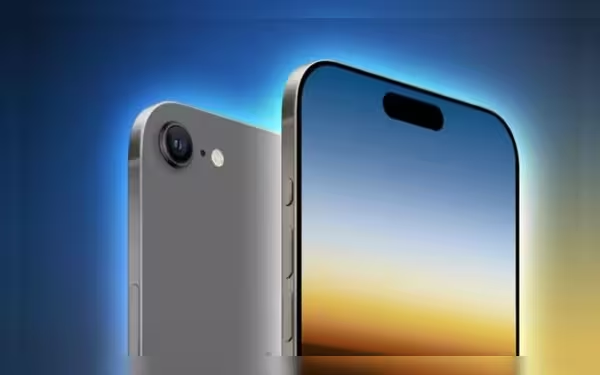Thursday, November 21, 2024 06:38 AM
iPhone 17 Launch: Ultra-Thin Design and Advanced Features Expected
- iPhone 17 Air may be just 6mm thick.
- New A19 chips promise improved performance.
- Dynamic Island feature to be refined in Pro Max.
 Image Credits: phoneworld_pk
Image Credits: phoneworld_pkAnticipation builds for the iPhone 17, featuring an ultra-thin design, advanced A19 chips, and refined features set for launch in 2025.
Apple has long been a leader in the smartphone industry, consistently pushing the boundaries of technology and design. As anticipation builds for the upcoming iPhone 17 lineup, set to launch in 2025, insights from industry analysts provide a glimpse into what consumers can expect. The iPhone 17 series promises to bring several design enhancements and new features that could redefine the user experience.
One of the most exciting rumors surrounding the iPhone 17 is the introduction of a new ultra-slim model, tentatively named the "iPhone 17 Air." This model is expected to be just 6mm thick, making it one of the slimmest devices Apple has ever produced. To put this into perspective, the current record for the thinnest iPhone is held by the iPhone 6, which measures 6.9mm. If the iPhone 17 Air achieves its rumored thickness, it could even rival some of Apple’s iPads, such as the 11-inch M4 iPad Pro, which is 5.4mm thick.
In addition to its sleek design, the iPhone 17 series will reportedly feature an advanced aluminum frame, enhancing its overall aesthetic appeal compared to the iPhone 16 series. The premium model, the iPhone 17 Pro Max, is expected to adopt a refined version of the "Dynamic Island" feature, which will be narrower thanks to innovative "metalens" technology. This advancement could lead to a more compact Face ID system, contributing to a more streamlined look.
Performance-wise, the iPhone 17 lineup is set to introduce Apple’s new A19 and A19 Pro chips, built using TSMC’s advanced N3P fabrication process. This upgrade promises higher transistor density, which translates to improved performance and better power efficiency. However, it is important to note that Apple is not expected to adopt TSMC’s next-generation 2nm technology until at least 2026.
While the iPhone 17 Air is generating buzz for its ultra-thin design, it is essential to consider the potential trade-offs. Achieving such a slim profile may lead to compromises in battery life, thermal performance, or other critical areas. As a result, the iPhone 17 Air may not be a high-volume model, appealing more to niche markets rather than the mainstream audience.
As we look forward to the official announcement of the iPhone 17, it is crucial to approach these rumors with caution. With approximately 10 months until the launch, Apple’s plans may evolve significantly. If the iPhone 17 Air does indeed reach a thickness of 6mm, it could set a new standard for ultra-thin devices. However, only time will tell if this ambitious design is practical and ready for the market.
The iPhone 17 lineup is shaping up to be an exciting addition to Apple’s portfolio, with innovative designs and powerful performance enhancements. As consumers, we can only wait and see how these developments unfold and what they mean for the future of smartphones. The journey of technology is always fascinating, and the iPhone 17 may just be the next big step in that journey.












